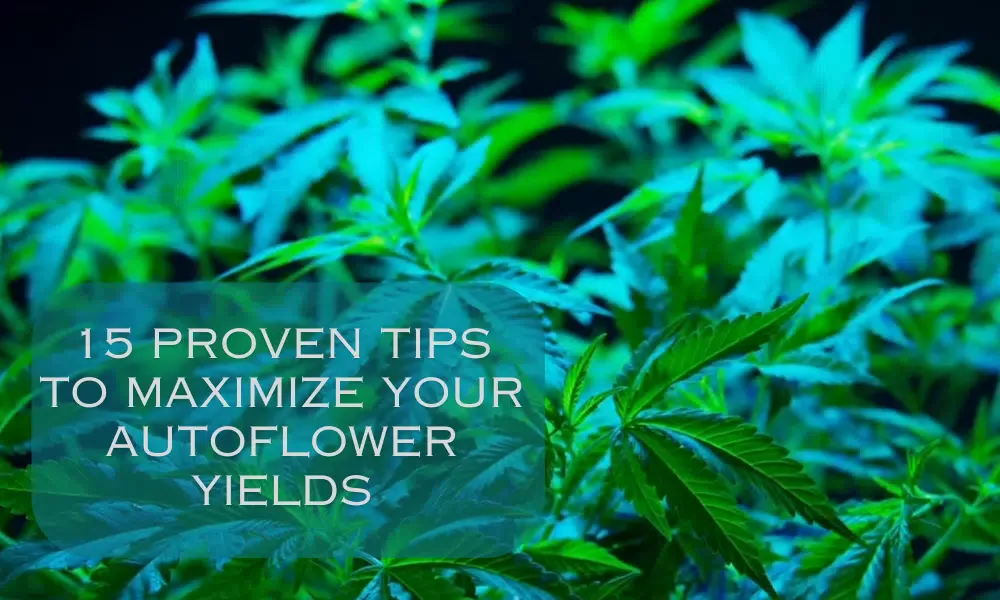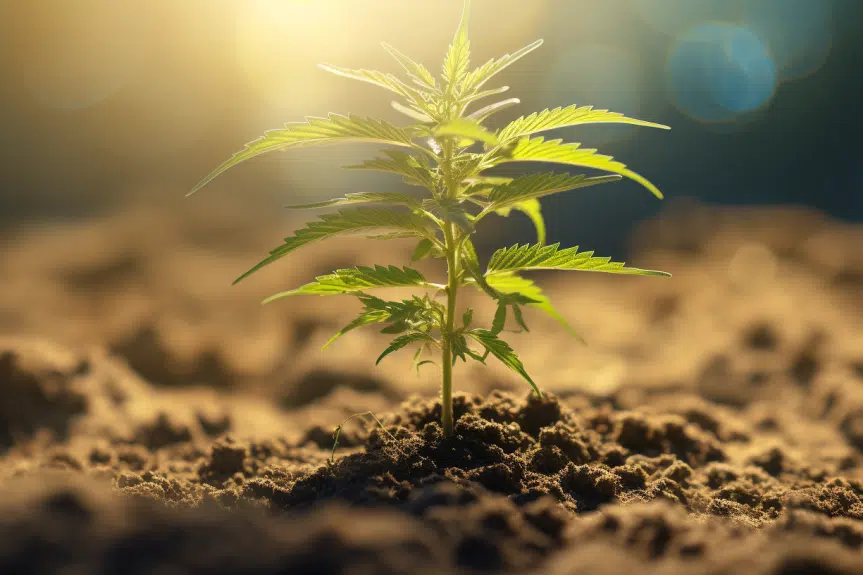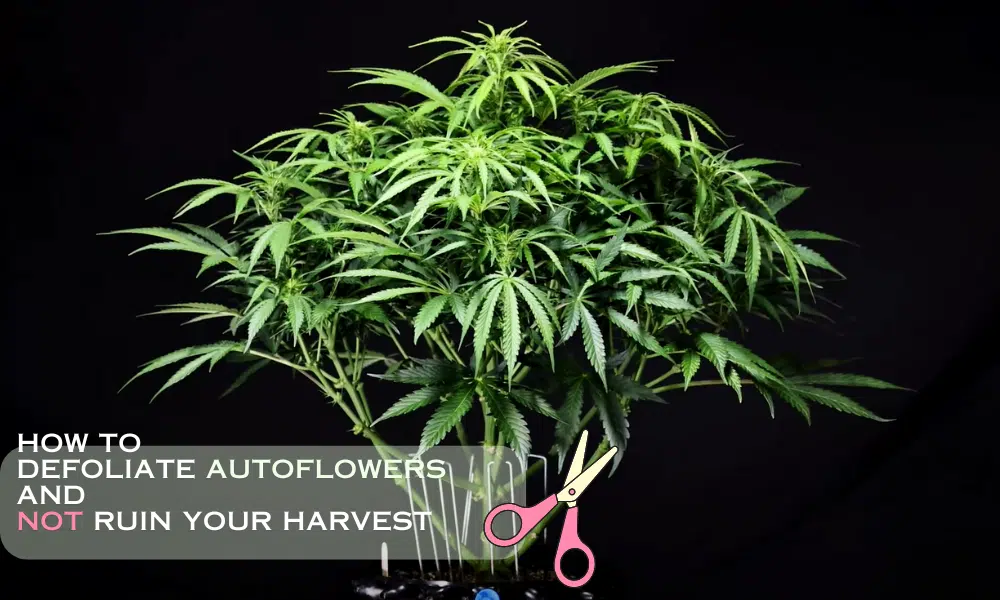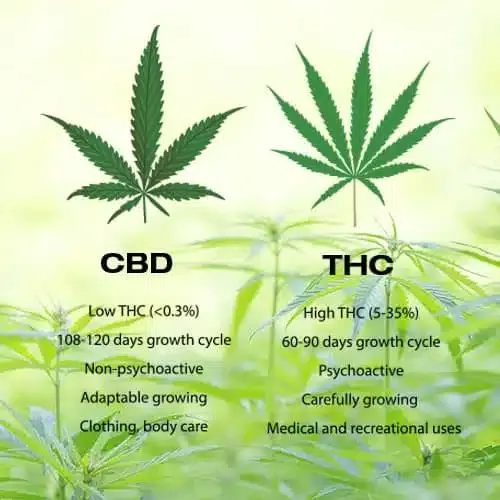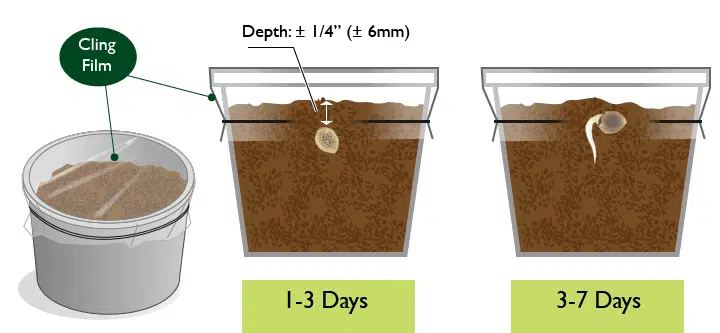How to Maximize Autoflower Yields And Get Bigger Buds
Autoflowers grow really fast but their relatively small yield is causing quite the headache for many growers. It’s almost like “you can’t have it all” with this seed genetics; but you can!
There are more stories of growers harvesting over 200 grams per autoflower with each grow season. What are they doing differently? Their cultivation.
In this auto flower cultivation guide, The Seed Fair team discusses how to maximize autoflower yields and get bigger buds in 15 easy steps.
What Yields are Good for Autoflowering Cannabis?
We ran a poll to assess how many growers consider autoflower yields good enough. Of the 500 persons who participated in the poll, only 213 growers claimed to be satisfied with their autoflower yields. A majority of 287 growers weren’t.
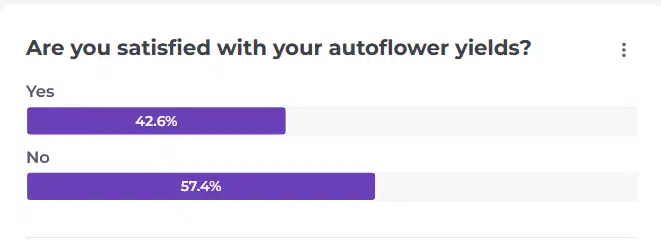
Before growers became more intentional about applying autoflower yield tips, a good autoflower yield was a meager 20 to 60 grams per plant. However, applying proper autoflower yield tips has helped growers achieve yields of up to 250 grams per plant.
Mike was one of these growers who found that the right autoflower yield tips can help you reap over 440 grams from just 4 autoflower plants. Sharing his story on a community forum, Mike (not real name) revealed how proper autoflower yield tips helped his yields:
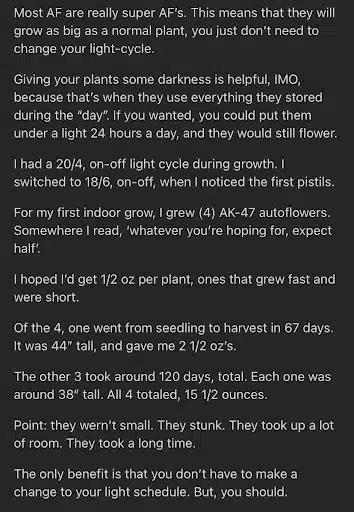
He was trying autoflowers for the first time and picked 4 AK-47 autoflowers to start. He’d already read somewhere that “with autoflowers, whatever you’re hoping for, expect half,” so he wasn’t expecting much autoflower yields, around just half an ounce, approximately 14 grams, per plant.
However, in about a few short weeks, Mike went from expecting 14 grams per plant to reaping over 57 grams per plant, reaching an overall yield of 440 grams from all plants they’d grown—five times greater than the yields they had expected.
He hadn’t done much to get these bigger buds. He’d only tried the right autoflower yield tips.
15 Proven Tips and Tricks to Get Bigger Yields for Autoflowers
We wondered what distinguished the 213 growers satisfied with their autoflower yields from the 287 dissatisfied growers.
Further investigation revealed that over 60% of dissatisfied growers do not employ proven autoflower yield tips, unlike the 66.2% of satisfied growers who do. It became clear: what makes the difference between these two groups is the proper use of autoflower yield tips.
Thus, we have provided 15 proven tips and tricks to get bigger yields for autoflower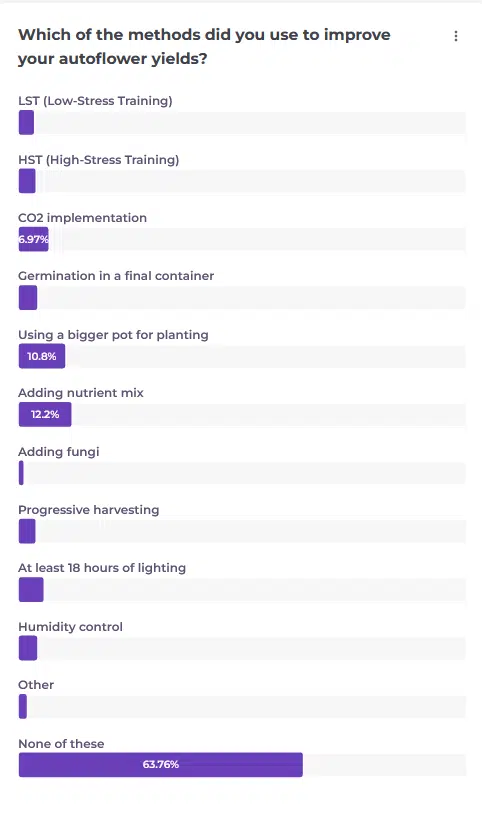
Don’t repot! Start autoflowering seeds in their final containers
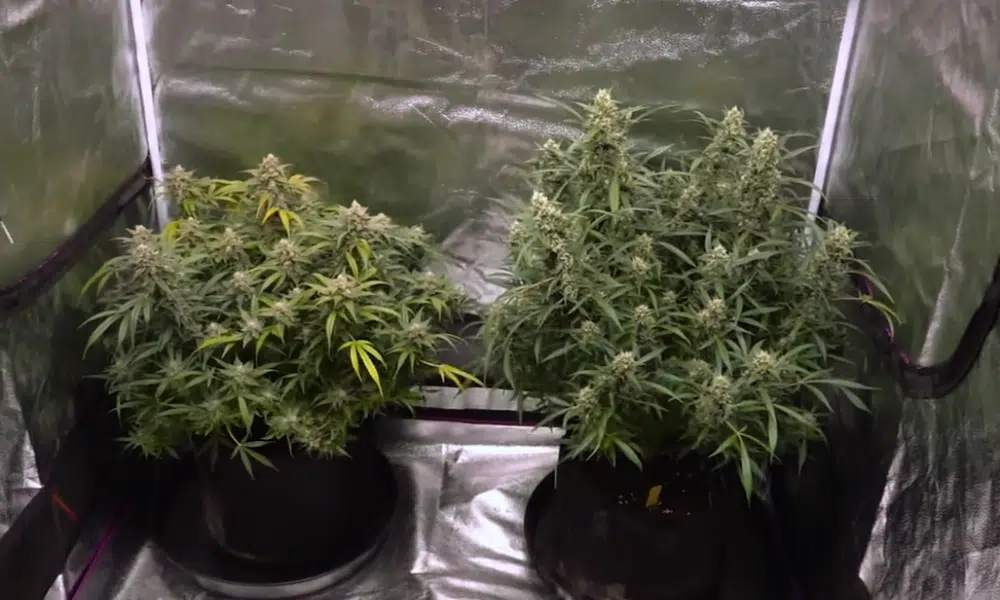
Autoflowers do not appreciate stress. So you want to start autoflowering seeds in their final container to avoid repotting or transplanting stress. This autoflower yield tip helps you achieve bigger autoflower yields by ensuring your plant’s development matches or supersedes its timeline.
Always start seedlings indoors
You should start seedlings indoors to ensure your plants get the best possible nourishment as they begin their lifecycle. If their genetics permit outdoor conditions, you can then decide to move them outdoors. However, you want to make this transition gently to avoid stressing the plant.
Use a bigger pot for planting
Your autoflower will only grow as large as its pot. Since you should not repot or transplant autoflowering seeds, choose a pot size that provides enough room for healthy root development and bigger autoflower yields. The ideal pot size for an autoflower is between 15 and 20 liters; going for overly large pots will lead to a waste of resources and might cause malnourished autoflowers.
Consider using fabric pot instead of plastic and ceramic ones
Using fabric pots for growing autoflowers may just be the next best autoflower yield tip there is. Fabric pots support bigger autoflower yields because they are breathable, lightweight, non-toxic, and durable. These pots also present unique opportunities to enjoy processes like air pruning. The ideal fabric pot should be airy enough for optimum moisture and air circulation without drying out the growing substrate.
Maintain a healthy soil
Only healthy soil can get you healthy autoflower yields. You risk your autoflowers suffering wilted roots, yellow leaves, and tiny, sickly buds when your grow soil is poorly maintained. Below are a few autoflower yield tips to maintain healthy soil and get bigger autoflower yields:
- Know your substrate’s properties
- Regularly monitor nutrient, pH, and moisture levels
- Enhance soil nutrients with additives such as bone meal, bat guano, and fish emulsion
- Promote proper aeration by adding materials like coco coir and perlite.
Consider adding a root stimulant or fungi
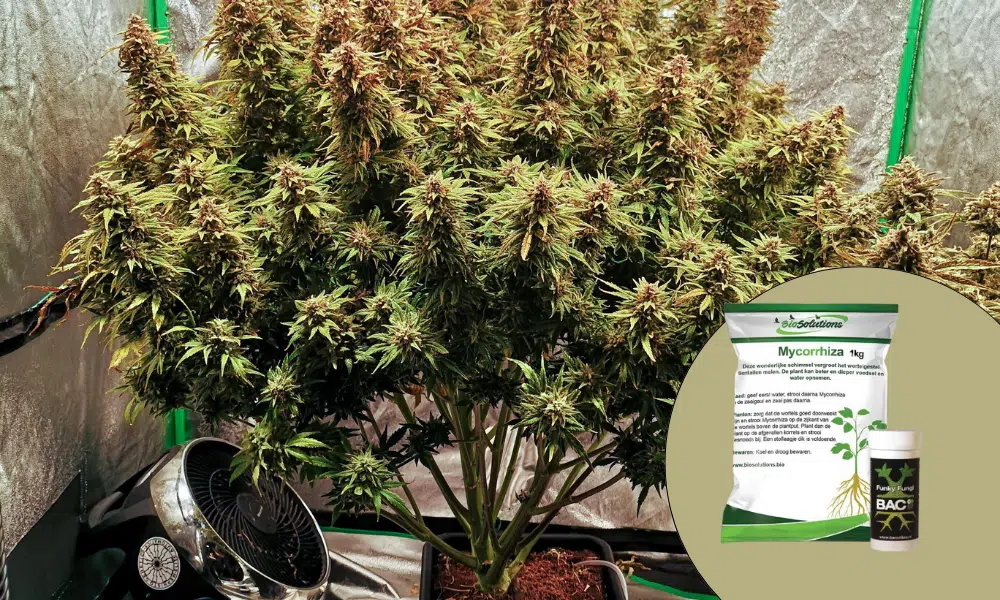
Adding root stimulants and/or fungi is a modern autoflower yield tip that helps to promote healthy root development for increased autoflower yields. Root stimulants typically contain ingredients like vitamins, nutrients, honey, etc., but may also include beneficial fungi, like Trichoderma, Endomycorrhizae, and Rhizobacteria. Including beneficial fungi as a root stimulant to your autoflowers helps to strengthen your autoflowers by protecting them against fungal infections like pythium. Many growers recommend adding root stimulants or fungi immediately after planting or around 8 to 10 days later to allow a bit of sprouting. You can purchase root stimulants or create them at home.
A member of SeedFair’s team shared her recipe for making honey root stimulant at home. She prefers honey as a root stimulant because of the high antimicrobial properties and sugar content contained in honey.
Note: Root stimulants are not the same as Rooting hormones.
| Recipe for Homemade Honey Root Stimulant
Ingredients:
Instructions
N.B.: Do not add the honey to the water while it is hot to avoid turning your honey toxic.
|
Don’t use High-Stress training for indoor autoflowers
Using high-stress training for autoflowers is not an ideal autoflower yield tip. This is because high-stress techniques, like topping and defoliation, involve heavy stressing and would almost certainly stall your autoflower’s development.
Growers who do recommend using HST as a suitable autoflower yield tip, advise only high-stress training outdoor autoflowers. The robust stress response systems outdoor autoflowers develop for surviving climate variability might also help them handle high-stress training better than indoor autoflowers.
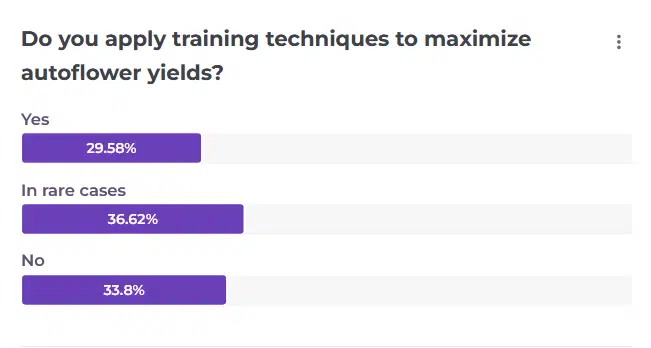
Use Low-Stress Training
According to another poll we conducted, we found that more growers are open to using training techniques to maximize autoflower yields. One common reason for this is that they’ve found low-stress training is a suitable autoflower yield tip.
Many autoflower growers recommend low stress training because it increases yields by encouraging multiple bud sites for more top buds instead of one main cola without heavy stressing. There are various suitable LST techniques for autoflowers, but growers consider the “Tie-down” method the best LST technique because it is simple yet effective.
For the best autoflower yields, start low-stress training your plants about 2 to 3 weeks after germination and stop low-stress training at the pre-flowering stage.
Use ScrOG
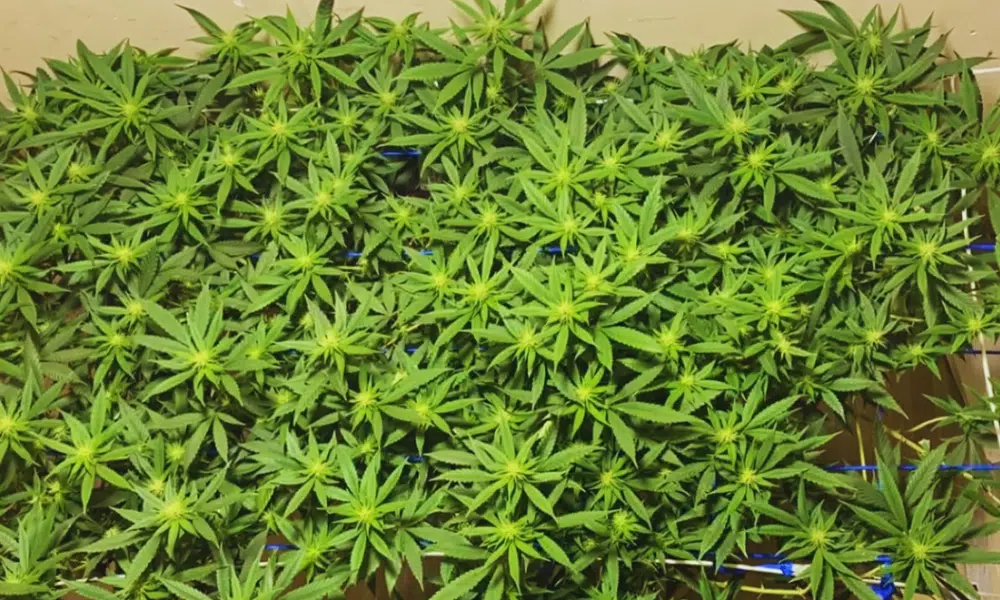
The ScrOG method, also known as Screen of Green, is a low-stress training technique that uses a screen to encourage multiple bud sites for increased autoflower yields.
Applying this autoflower yield tip to your plant can be a bit laborious and time-consuming. However, growers overlook those flaws because the ScrOG method is easy to set up, works indoors and outdoors, and offers automatic structural support to the autoflowers.
Apply staking to support the plant colas
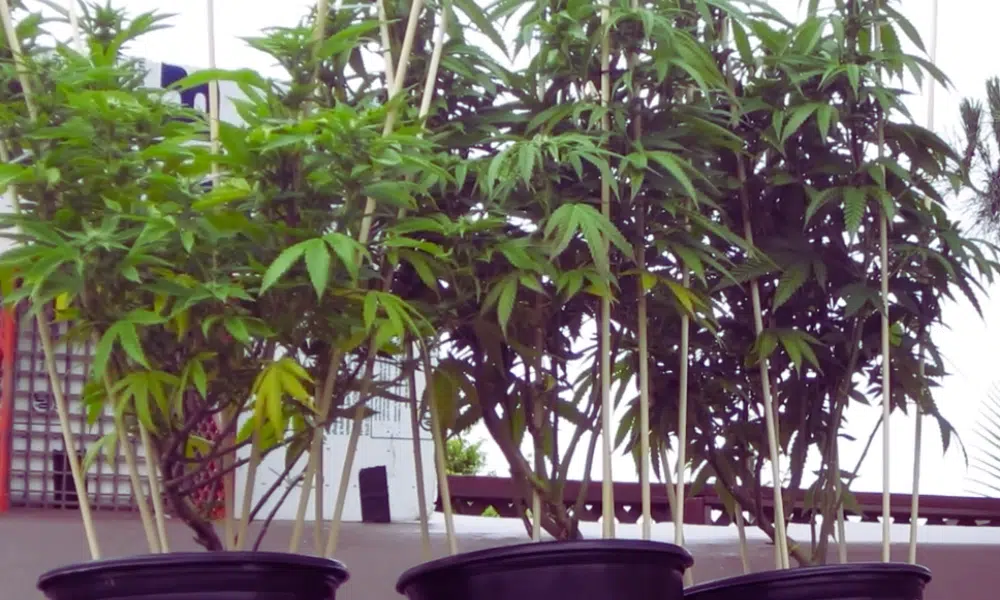
If you are not using the ScrOG technique, then you need this autoflower yield tip.
Once your autoflowers start getting bigger buds, they become more prone to snapping under their weight. Staking is a structural support system that helps your plant stay erect and enables proper air circulation within your thick autoflower grow.
When staking, apply these autoflower yield tips:
- Leave a few inches between the autoflower’s base and the stake to avoid root damage.
- Use only gentle plant ties to secure the autoflower
- Wait at least 2 to 3 weeks post-germination to avoid damaging delicate stems or restricting natural growth
Osmosis water instead of tap water
Autoflower yield tips work hand in hand, and the right growing water can help ensure you get even better results from each tip. You should use osmosis water over tap water for growing autoflowers because it meets the pH standards of autoflowers, 6.0 and 7.0 (slightly acidic to neutral), and is pure and ultra-fine. These features offer growers an excellent base to create the perfect nutrient water for better autoflower yields.
Also, unlike distilled water, osmosis water can be used for growing seedlings and mature auto flowers. It also more easily integrates into grow setups. You can buy osmosis water or make it at home.
Progressive harvesting
Progressive harvesting is an autoflower yield tip that allows you to make multiple harvests of numerous dense buds per cycle. The principle behind progressive harvesting is to pick ripe buds and allow the plant to refocus its energy on fattening less mature buds.
You can progressively harvest autoflowers up to twice per cycle. But you should wait at least 1 to 2 weeks after each harvest to give the plant adequate time to rest and enable less mature buds to fully develop.
CO2 to fuel photosynthesis
Adding CO2 to autoflowers increases your plant’s photosynthesis to grow them faster and achieve bigger yields and is thus a suitable autoflower yield tip. The ideal CO2 range for growing autoflowers is between 1200 and 2000 PPM. You can measure CO2 levels using a CO2 meter and increase CO2 levels using a CO2 generator, dry ice, or a baking soda-vinegar mixture.
Too much CO2 in your autoflower can weaken your plant. Thus, you want to adjust CO2 levels alongside other factors, like temperature, airflow, humidity, and lighting, to maintain optimal CO2 levels.
Implement humidity control
When targeting big autoflowers, both high and low humidity present risks to maximum yields.
It is important to maintain humidity levels between 60 and 70% during the vegetative stage for a moist rooting environment and around 40% during flowering to reduce high-moisture risks like mold. A hygrometer can be used to measure and maintain humidity levels when growing autoflowers.
To regulate humidity levels indoors, use a humidifier or dehumidifier. Outdoors, employ cultural practices like light but frequently watering to keep your plants cool.
At least 18 hours of lighting
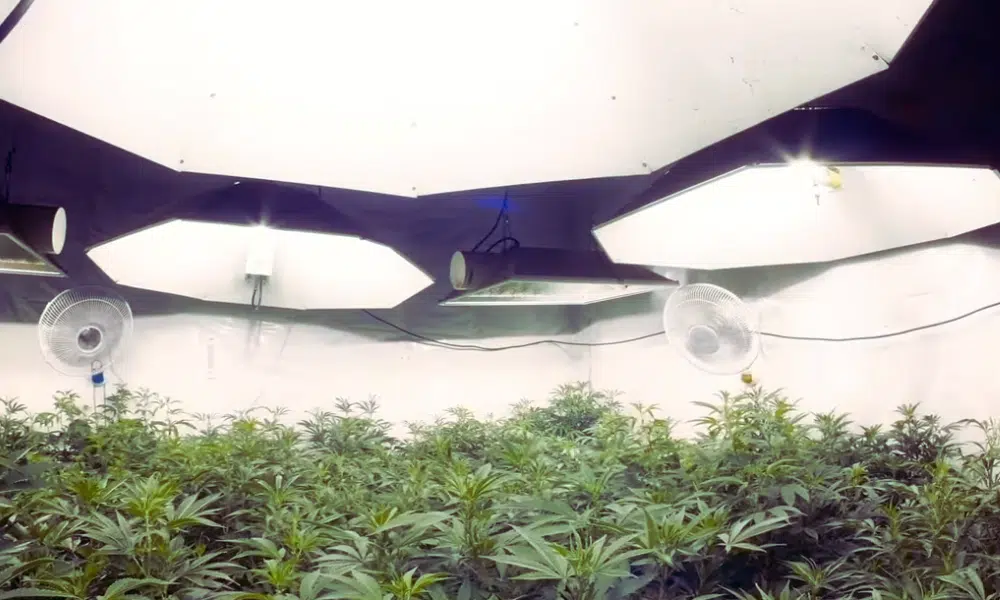
Because autoflowers have the C. ruderalis genetics, some think autoflowers do not need light to grow. But they do. Autoflowers need at least 18 hours of light to properly develop vegetative parts. As a result, some growers apply varying light schedules. But we like to go with the 18/6 cycle to minimize energy consumption and encourage the best yields. A good-quality LED or HPS light can provide the needed light quantity and intensity.
This light cycle also suits various climates and growing needs, reducing the need to switch cycles, which might trigger plant stress. A good-quality LED or HPS light can help you adequately deliver the best light requirements in quantity and intensity to your autoflower.
Our highest-yielding autoflowering strains to get the fat buds
You can only get the best rewards with autoflower yield tips when you choose the right autoflower genetics. Because indica species produce bigger, denser buds than the sativas, our list contains some of the best indica autoflowering strains to grow for fat buds:
- Northern Lights Autoflower
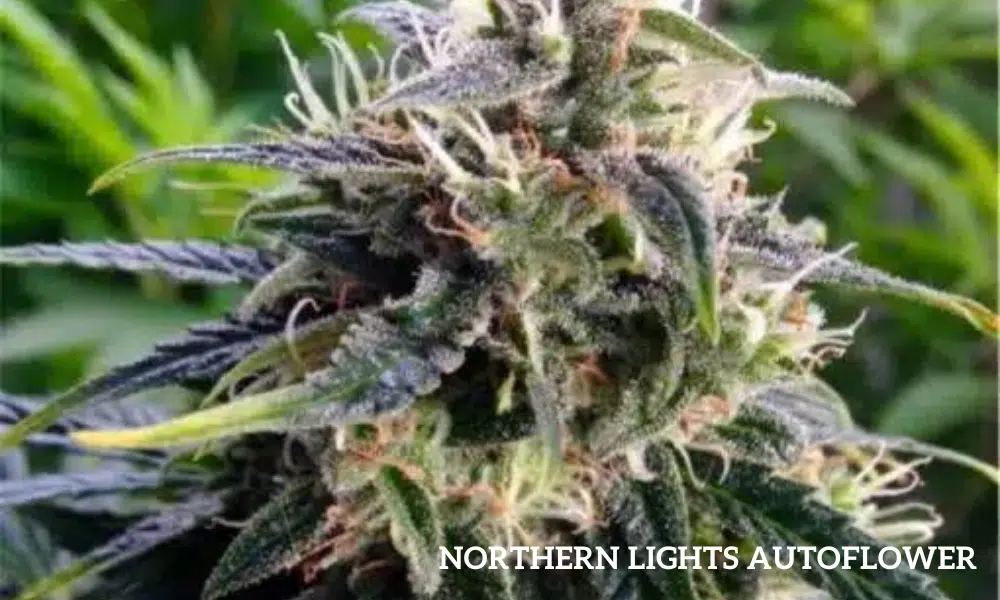
Northern Lights Autoflower is an indica-dominant strain suitable for growing indoors and outdoors. Proper autoflower yield tips can get this flower to produce up to 550 grams per square meter indoors and take 5 to 8 weeks to reach harvest. Outdoors, this cannabis variety can produce up to 220 grams per plant and take up to 12 weeks to fully mature.
- White Widow Autoflower
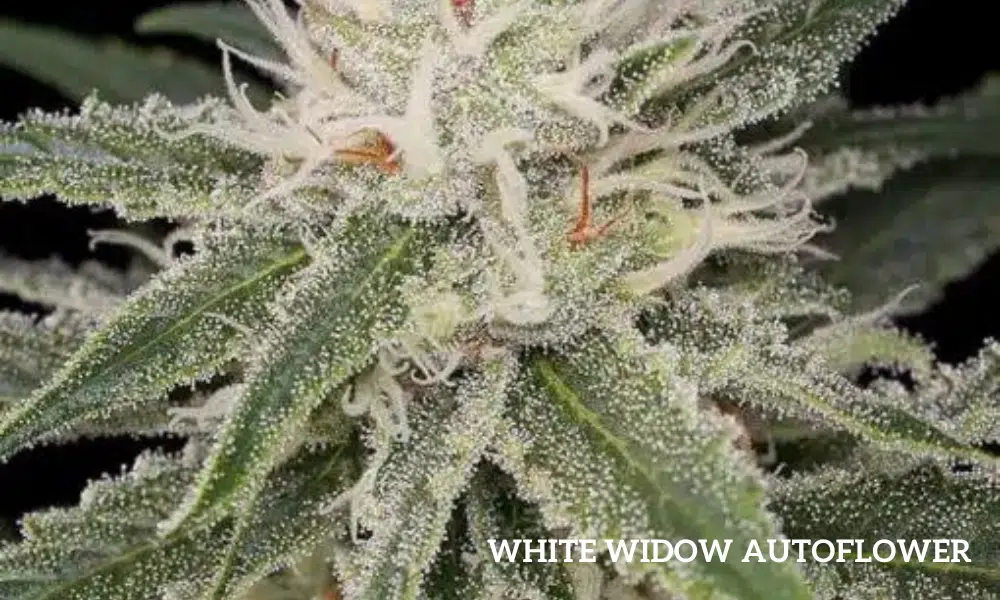
White Widow Autoflower is a high-potency, indica-dominant strain suitable for indoor and outdoor setups. This cannabis strain ideally produces between 400 and 450 grams per square meter indoors and hits full bloom in about 7 to 8 weeks. Outdoors, the White Widow Autoflower yields between 190 and 240 grams per plant and reaches harvest in about 10 to 12 weeks.
- Blueberry Autoflower
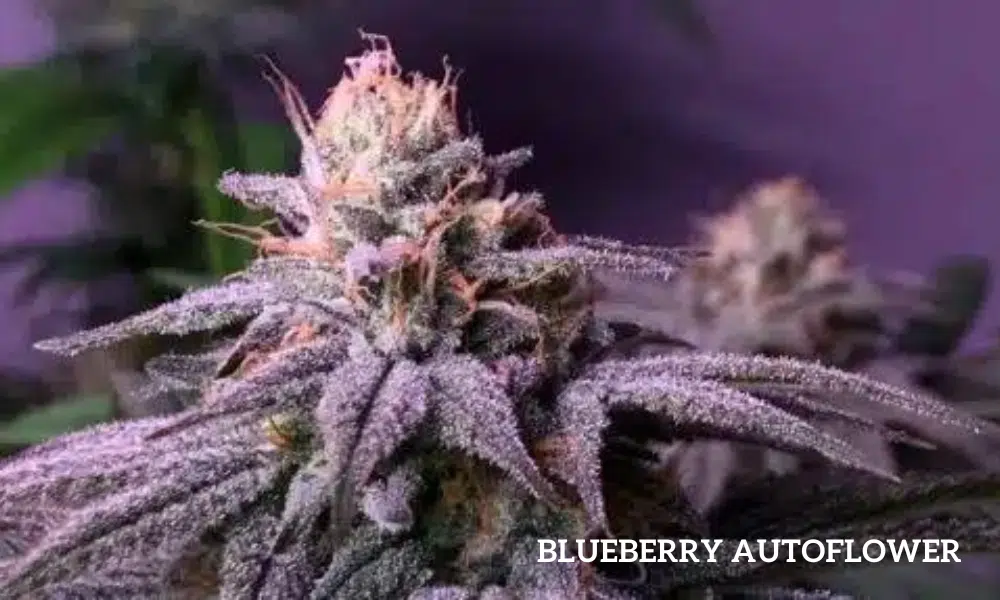
Blueberry Autoflower is another indica-dominant strain that can be grown indoors and outdoors. Indoors, this autoflower can yield up to 500 grams per square meter and reach harvest in 8 to 9 weeks. Outdoors, the Blueberry Autoflower can produce up to 150 grams per plant, hitting harvest in 10 to 12 weeks.
- Critical Mass Autoflower
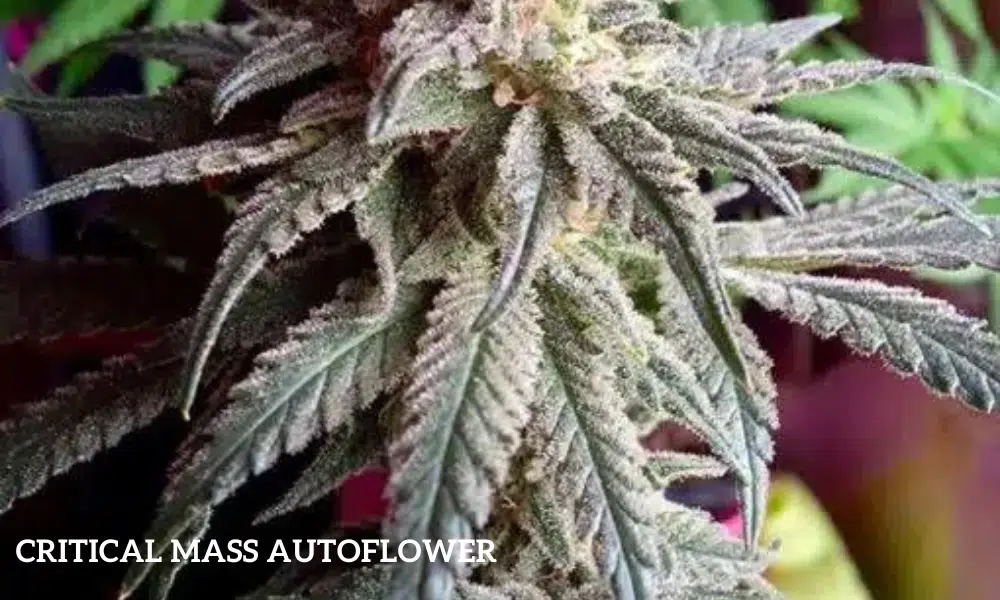
Critical Mass Autoflower is an indica-dominant strain so named for its renowned large, dense buds, which put it at a heavy risk of mold and bud rot and its branches snapping. As a result, experts recommend growing the Critical Mass Autoflower indoors and applying staking to support its entire structure. Indoors, this autoflower can yield up to 750 grams per square meter and reach harvest in 6 to 8 weeks.
- Gorilla Glue Autoflower
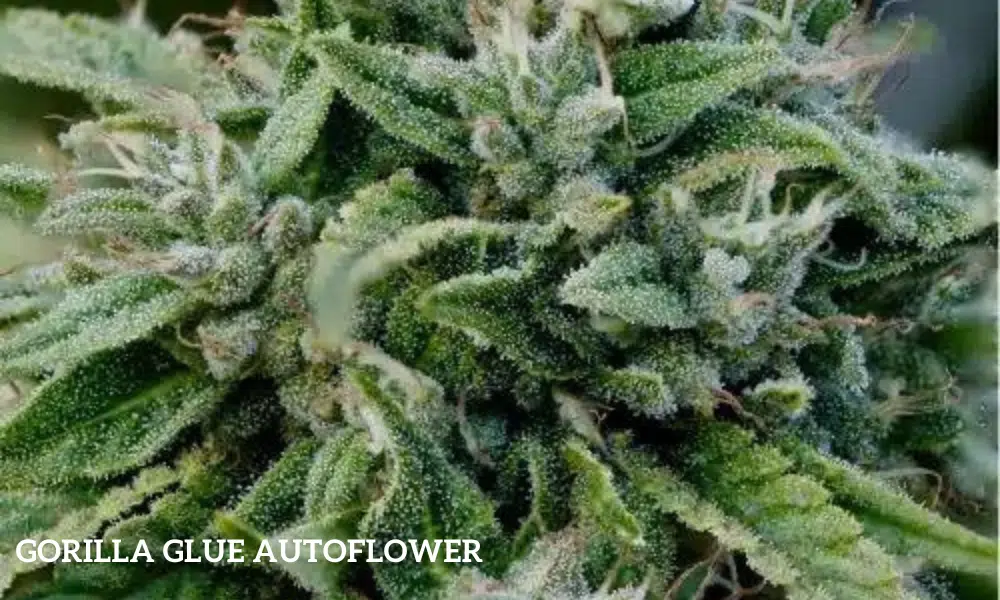
Gorilla Glue Autoflower is also an indica-dominant strain. Using proper autoflower yield tips can increase this autoflower yield by up to 600 grams per square meter indoors in about 9 to 10 weeks. Outdoors, the Gorilla Glue Autoflower can yield up to 350 grams per plant and hit harvest in 10 to 12 weeks.
Conclusion
Applying autoflower yield tips is essential for increasing your autoflower yields above the regular limits. Thankfully, the best autoflower yield tips are pretty straightforward: choose the right genetics, maximize available grow conditions, and minimize yield-limiting risks. Implement the provided autoflower grow tips correctly, and you can be more sure of getting bigger buds, bigger autoflower yields, and a soaring green harvest.
FAQ section
Do Autoflowers yield more outdoors?
Yes, autoflowers yield more outdoors because necessary grow conditions, such as sunlight, space, air, etc. are abundant.
Can I defoliate autoflowers to get bigger buds?
Defoliation is a high-stress training technique. Hence, we do not recommend defoliating autoflowers to avoid stunting their yields. Experienced growers may choose to gently remove leaves during the vegetative stage, but it’s advisable to avoid doing so once they enter the flowering stage.
Why are my autoflower yields so low?
There are several reasons your autoflower yields are so low. It might be because of genetics, improper growing conditions, or your autoflowers calling for you to try some proper autoflower yield tips.
Does topping Autoflowers increase yield?
Some growers admit to increasing autoflower yields with cannabis topping. But, because topping is an HST technique, we advise against using it on autoflowers.

